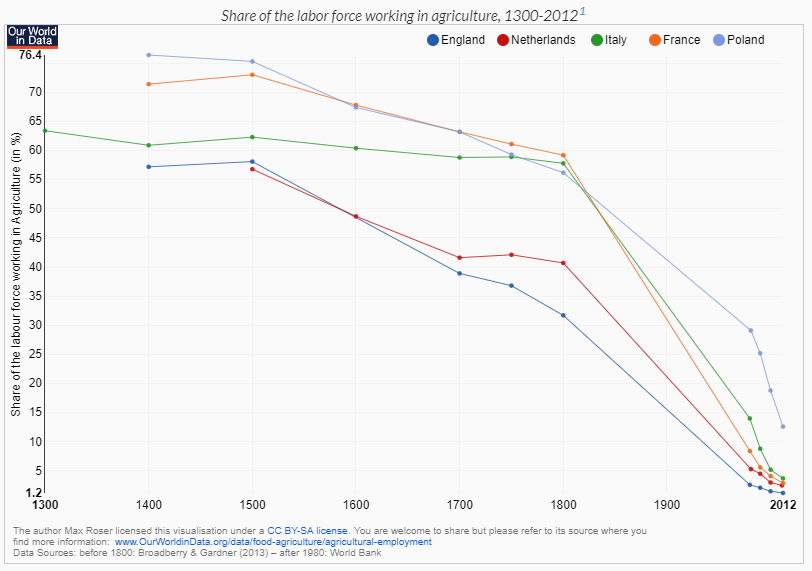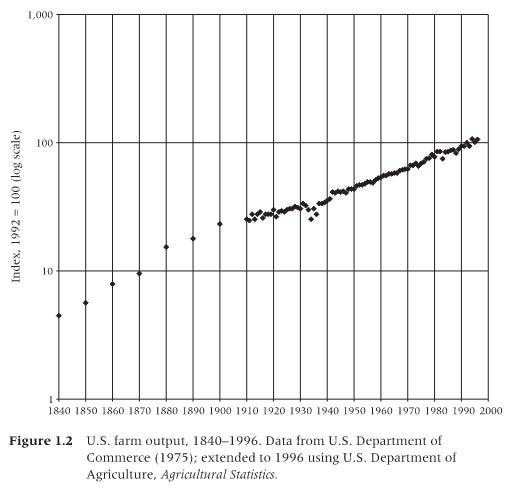This is our third visit to Construction Physics, links to the first two after the jump.
From Construction Physics:
On her YouTube channel, Belinda Carr poses an interesting question: why did agriculture mechanize (ie: replace manual labor with machine labor), but not construction?
Construction is often contrasted with factory-based production, but in many ways agriculture is a better comparison. Both construction and agriculture have traditionally been labor intensive activities. Both take place outdoors, exposed to the elements. And both require the work to be spread over a large, unstructured environment (unlike factory production, where the entire process can be tightly controlled).
But unlike construction, agriculture has seen massive drops in labor required to perform it. The percentage of the population employed in agriculture has declined from 40 to 60% in 1700, to less than 2% today. Between 1900 and 2015, the number of people employed in agriculture in the US declined from 12 million to 2 million, a period in which US farm output (as well as total population) quadrupled:

Agricultural employment over time, via Our World In Data

Much of this reduction in labor was relatively recent. From 1940 to 1960 alone, Richard Day estimates that the labor required per bushel of cotton was reduced by 90%. The introduction of the tomato harvester reduced the labor required to harvest tomatoes by 50% between 1965 and 1973:....
.... MUCH MORE
Previously: